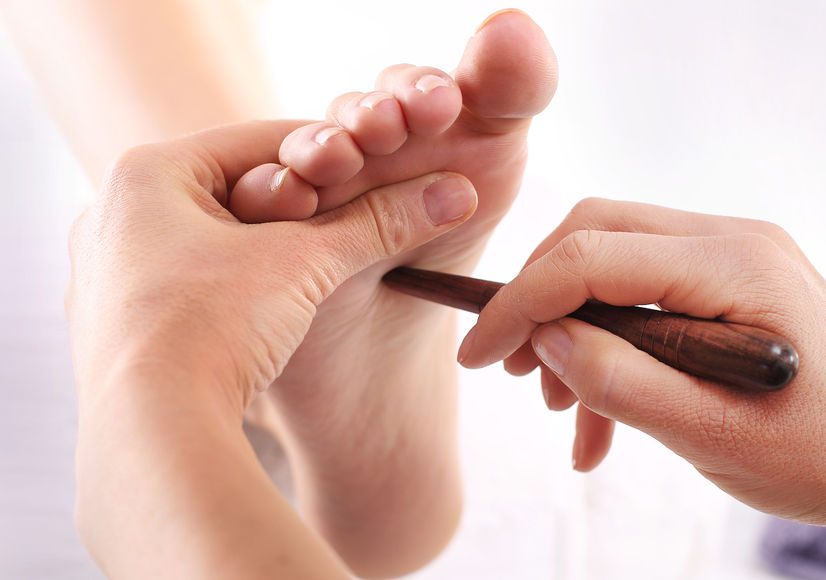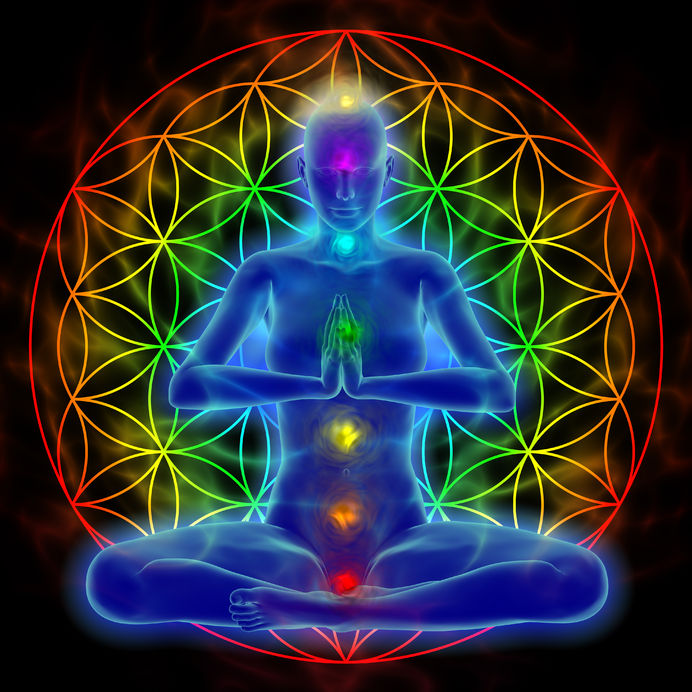The Life Force Definition Expanded
Various spiritual philosophies call life force energy by different names.
prana: In yoga, Ayurveda and Indian martial arts, the Sanskrit word for life force or vital principle; the life-giving force;
pneuma: In stoic thought, the vital spirit, soul, or creative force of a person;
qi: the circulating life force whose existence and properties are the basis of traditional Chinese medicine (TCM); this life force energy fills the universe.
According to TCM, there are many kinds of chi or qi imbued with a life force energy all their own. TCM calls this qi heavenly because it includes the energy of the planets, stars and constellations, sunshine and moonlight, and the energy of God the Infinite Itself—the source and force of creation and Universal Love.
The near one hundred year old seminal books, Life and Teaching of the Masters of the Far East, chronicle the teachings of advanced Himalayan Masters. These Masters possess unlimited wisdom on human potential—physically, mentally and spiritually.
And they define life force energy this way:
It was only a short time ago that your learned men began to know of the delicate system of arteries and veins composing the circulatory system of your bodies. It is still left for them to determine that there is a far more delicate and subtle circulatory system throughout the body, which carries the life force to every atom.
Through your nervous system this life force is sent to a set of cells in the brain. These cells, in turn, act as a distributor for the [life] force and it is sent out to every atom of the body along the nerves, for which it has an affinity. It also acts as a protection for the nerves.
If the life force is dissipated, the cells become set and cannot change for the new cells that are formed to take their place are thrown off instead of the old ones, which gradually decompose and die.
If the life force is conserved, the cells change as readily at five hundred years as at ten.
Conserving, even amplifying life force energy, is part of how the Himalayan Masters enable themselves to live indefinitely.
Networks of Life Force Energy
Did Modern Day Deepak Chopra, MD Study the Himalayan Masters? He defines life force energy very much like they do.
In Chopra’s first book on agelessness, Ageless Body, Timeless Mind: The Quantum Alternative to Growing Old, he discusses how humans are magnificently organized networks of energy, information, and intelligence.
He explains how we participate in dynamic exchange with our environment, fully capable of transformation and renewal.
Chopra defines vital energy as a subtle energy flowing throughout the body.
We may think the human body is little more than biological matter similar to machinery that deteriorates steadily and unavoidably over time.
But Chopra explains life force energy in the human being differently: When life force energy flows abundantly, we slow the aging process.
We amplify our life force energy through lifestyle and belief. It’s all in the way we treat our bodies and even in how we treat and utilize our minds.
The universal principle of “Like Attracts Like” is always at work. So anything we do to reaffirm life and vitality will reaffirm, even increase, life force energy, and vitality and life itself in our bodies.
Especially during yin energy times of year—the seasons when we withdraw more into ourselves—take time to absorb the heavenly qi and increase your life force energy. These yin energy seasons according to TCM are energetic Fall and Winter.
The energies of these seasons will absolutely support you to amplify your life force energy.
PHYTO5 offers respective lines of quantum energetic skincare for the skin conditions associated with TCM’s five seasons and for the seasons themselves. Quantum energetic, they’re formulated to help you balance your skin condition, vital life force energy and emotions.
Earth’s Helpful Qi
Earth itself has energy to give you that will encourage your life force energy flow. The martial art, Qi Gong, calls the practice of absorbing natural lie the art of gathering heavenly qi. When you practice Qi Gong or any of the following activities, you grow your life force energy.
Walk barefoot.
“Prana contained in the ground is called ground prana or ground vitality globule. This is absorbed through the soles of the feet. This is done automatically and unconsciously.” — Choa Kok Sui in Miracles through Pranic Healing: Practical Manual on Energy Healing.
2) Practice prayanayama or pranic deep breathing (also known as Tan Tien(1) cleansing breath).
Accomplish pranic breathing nourishing to life force energy by:
touching your tongue to your palate;
breathing through your abdomen and through the nostrils;
inhaling slowly and holding for one count;
exhaling slowly and holding for one count;
being sure you don’t over-expand or over-contract the abdomen.
If this seems too complicated, simply practice six breaths a minute. The life force energy you amplify with this practice will slow aging and many of its causes.
Read our instructional blog on six breaths a minute here.
Life force energy charges your aura as well as your body. Choa Kok Sui also says:
“Pranic breathing energizes you to such an extent that your aura temporarily expands by 100% or more. The inner aura expands to about eight inches or more, the health aura to about four feet or more, the other aura to about two meters or more.”
3) Sit in a nature setting and absorb the flowing natural energies. Invite them into your own vital life force energy.
4) Eat living food rich in real earth nutrients. When you eat fresh produce it’s like eating light. Living fruits and vegetables actually contain trapped light you can absorb to increase your life force energy.
Try to eat more organic than conventionally grown produce. Some experts say organic contains a higher overall nutritive content not to mention its own life force will be more intact than conventionally grown.
5) Drink pure water. Water absorbs prana life force energy from sunlight.
6) Absorb the life force energy of the sun, moon and galaxy. Your skin and eyes will absorb their qi life force energy. This nourishing energy will travel into your brain and circulated through the pineal, pituitary and hypothalamus glands to animate them with life force.
7) Hug a tree.
“Certain trees such as pine trees or old and gigantic healthy trees exude a lot of excess prana. Tired or sick people benefit much by lying down or resting underneath these trees.” — Choa Kok Sui.
And says Jasmuheen in The Madonna Frequency and the Food of Gods:
“Trees and all plant life are living fields of intelligence that just happen to exist within the confines of a different molecular structure than the human bio-system. They operate via a group consciousness and are not as individualized as we are and they love receiving our carbon dioxide as much as we benefit from breathing in the oxygen they generate.”
8) Walk in breezes to absorb wind prana life force energy. Its life force will cleanse and revitalize you.
9) Ask in prayer to feel and receive qi life force energy. The universe will bow to your prayer.
10) Meditate. Meditation gives you a sound and solid foundation for increasing your life force energy from within.
“In a comfortable place, on a warm evening under the stars … sit in meditation. Engage Tan Tien breathing(1). Find the rhythm of your breath and your center of balance and close your eyes. Let your breath open and relax the joints of your body. Now with your breath, circulate the Chi through the Orbits.(1)” —Elise Dirlam Ching et al in Chi and Creativity: Vital Energy and Your Inner Artist.
11) Practice Tai Chi and/or Qi Gong. It will surely increase your life force.
“What sets Tai Chi apart from other exercise programs is its internal work. In a series of postures, or forms, the mind and body work in unison to move Chi (vital energy) from one part of the body to the next.” — John Young Man So in Tai Chi for Everyone: A Life-long Exercise Program for Longevity and Health.
12) Do yoga to amp up your life force energy. Even practicing at your own pace and level is all you need to achieve an increase in life force vitality.
13) Learn to feel your chakra system and work with it to amplify your life force energy.
“Chakras are personal energies. They are energy vortices, or wheels, inside the body that receive and moderate universal life force energies, or chi. Each chakra acts as a kind of valve or regulator and controls the flow of energy through our system. The universal life force (chi) enters the body through the chakra at the top of the head and travels down the spinal column to the other chakras. When we are living in harmony with the Universe, these vortices, or valves or chakras, are open and allow an abundant flow of chi energy.” — Connie Johnson, Connie in Spiritual Concepts for a New Age: Psychic Serenity in the Human Experience.
14) Don’t underestimate the power of visualization. Visualize the flow of qi life force energy flowing throughout your body and mind.
“With consistent practice one can visualize Chi flowing inside the cavities and meridians of the body, creating a sense of health and well-being.” — John Young Man So in Tai Chi for Everyone: A Life-long Exercise Program for Longevity and Health.
15) Receive life force energy amplification from an energy medicine practitioner and/or bodyworker.
“Prana can also be projected to another person for healing. Persons with a lot of excess prank tend to make other people around them feel better and livelier. However, those who are depleted tend to unconsciously absorb prana from other people.” —Raphael Merlotte in The World Before Lies.
Bodywork includes many holistic therapies like massage and acupuncture. The work they do will positively get your energy flowing and ignite your life force energy.
16) Finally, laugh, laugh and laugh some more. Laughter is an uplifting healing therapy. It makes your whole being come alive with animated life force energy. It brings you into a relaxed state paving the way for unrestricted life force energy to flow and heal.























